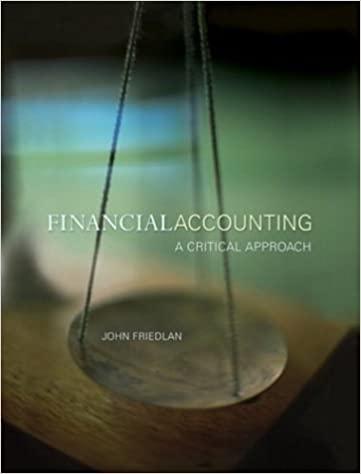(The effect of different amortization methods on future income taxes, LO 7) Caycuse Inc. (Caycuse) has just...
Question:
(The effect of different amortization methods on future income taxes, LO 7)
Caycuse Inc. (Caycuse) has just completed its first year of operations on December 31, 2005. The company owns a single asset that cost $100,000. For tax purposes Caycuse can deduct $15,000 in CCA in calculating its taxable income.
Assume that Caycuse’s tax rate is 20%.
Required:
a. Determine the future income tax asset or liability on December 31, 2005 if Caycuse amortizes its asset on a straight-line basis over 10 years.
b. Determine the future income tax asset or liability on December 31, 2005 if Caycuse amortizes its asset on a straight-line basis over five years.
c. Determine the future income tax asset or liability on December 31, 2005 if Caycuse amortizes its asset on a declining balance basis at 30% per year.
d. Determine the future income tax asset or liability on December 31, 2005 if Caycuse amortizes its asset using the same basis used for tax purposes.
e. According to the three GAAP characteristics for determining whether a liability exists, is a future income tax liability really a liability? Should a future income tax asset be considered an asset? How would you interpret the future income tax assets or liabilities that you calculated in parts
(a) through (d)
above?
Step by Step Answer:






